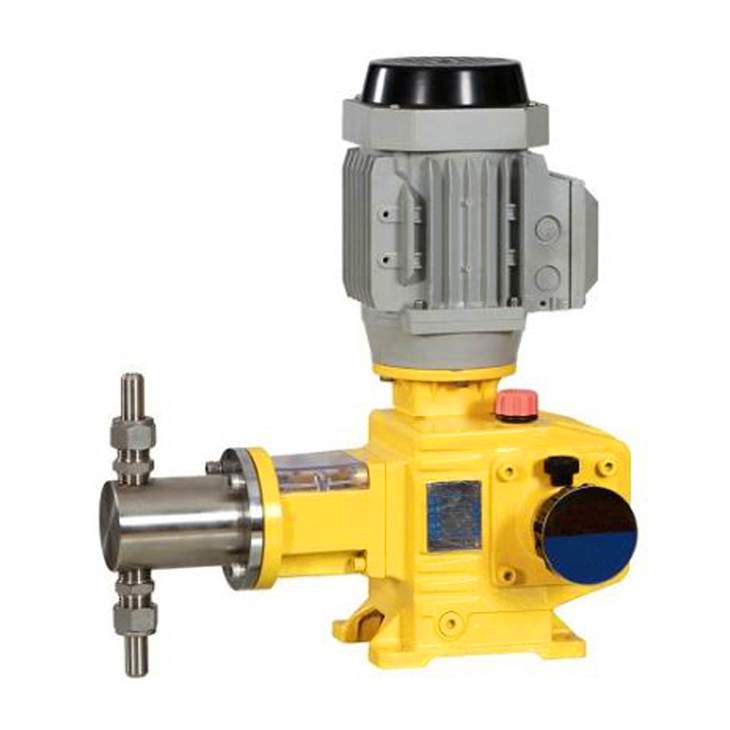Many metering pumps are piston-driven. Piston pumps are positive displacement pumps which can be designed to pump at practically constant flow rates (averaged over time) against a wide range of discharge pressure, including high discharge pressures of thousands of psi.
Piston-driven metering pumps commonly work as follows: There is a piston(sometimes called plunger), typically cylindrical, which can go in and out of a correspondingly shaped chamber in the pump head. The inlet and outlet lines are joined to the piston chamber. There are twocheck valves often ball check valves, attached to the pump head, one at the inlet line and the other at the outlet line. The inlet valve allows flow from the inlet line to the piston chamber, but not in the reverse direction. The outlet valve allows flow from the chamber to the outlet line, but not in reverse. The motor repeatedly moves the piston into and out of the piston chamber, causing the volume of the chamber to repeatedly become smaller and larger. When the piston moves out, a vacuum is created. Low pressure in the chamber causes liquid to enter and fill the chamber through the inlet check valve, but higher pressure at the outlet causes the outlet valve to shut. Then when the piston moves in, it pressurizes the liquid in the chamber. High pressure in the chamber causes the inlet valve to shut and forces the outlet valve to open, forcing liquid out at the outlet. These alternating suction and discharge strokes are repeated over and over to meter the liquid. In the back of the chamber, there is packing around the piston or a doughnut-shaped seal with a toroid-shaped sphincter-like spring inside compressing the seal around the piston. This holds the fluid pressure when the piston slides in and out and makes the pump leak-tight. The packing or seals can wear out after prolonged use and can be replaced. The metering rate can be adjusted by varying the strokelength by which the piston moves back and forth or varying the speed of the piston motion.
A single-piston pump delivers liquid to the outlet only during the discharge stroke. If the piston’s suction and discharge strokes occur at the same speed and liquid is metered out half the time the pump is working, then the overall metering rate averaged over time equals half the average flow rate during the discharge stroke. Some single-piston pumps may have a constant slow piston motion for discharge and a quick retract motion for refilling the pump head. In such cases, the overall metering rate is practically equal to the pumping rate during the discharge stroke.






